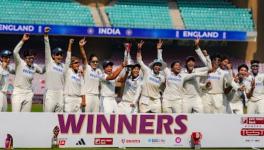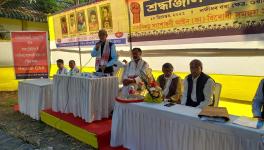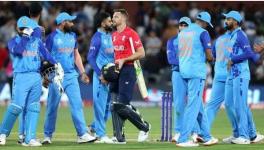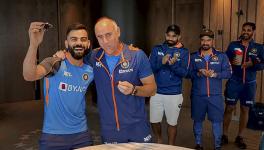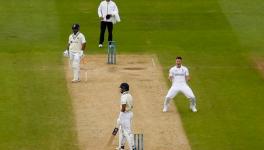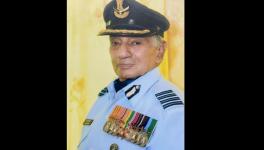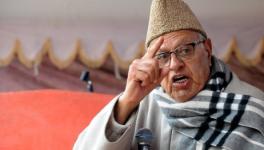BCCI Cricket Advisory Committee: To Be or Not to Be, That’s the Conflict | On the Ball
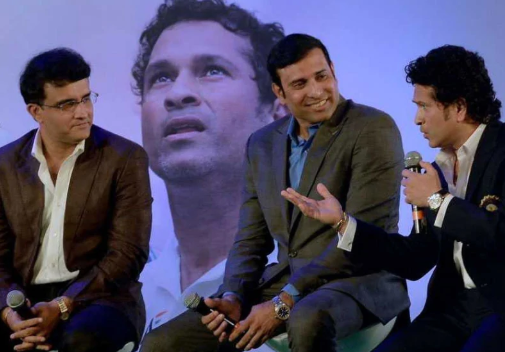
BCCI’s Cricket Advisory Committee (CAC), comprising of Indian cricket legends Sourav Ganguly, VVS Laxman and Sachin Tendulkar, was the brainchild of Jagmohan Dalmiya and took shape in 2015.
So, the Cricket Advisory Committee (CAC) still exists. Or, at least, a downsized version of it, following Sourav Ganguly’s resignation from the body a little while back. Unfortunately, its continued existence came to light only when Justice DK Jain, the Ombudsman of the Board of Control for Cricket in India (BCCI), who is temporarily doubling up as the Ethics Officer too, sent a notice to Sachin Tendulkar and VVS Laxman. The notice sought a reply to a complaint of conflict of interest received from a life member of the Madhya Pradesh Cricket Association, citing their involvement with different franchises in the Indian Premier League (IPL) as mentors.
We’ll come to the conflict of interest imbroglio later. First, to the CAC itself, and how a body comprising three of India’s greatest cricketers is reduced to a selection panel of sorts.
The CAC was the brainchild of Jagmohan Dalmiya, and took shape in June 2015 when he returned as the BCCI president, with Anurag Thakur as the secretary. Under the CAC’s ambit originally was a wide range of important issues — to suggest ways of improving the away performances of the senior team, to facilitate the seamless progression of promising talent from the Under-19 to the national side via the India ‘A’ route, to improve the stock of spin resources, to strike a balance between the three formats of the game, and to educate and offer life-skill support for the young guns.
Read More | Democratic Structure in BCCI Reforms Weakened by SC Order: Justice Lodha
It was the thrill of these challenges, and the opportunity to remain involved in the game in a meaningful capacity post-retirement, that encouraged the trio to readily agree to embrace their new responsibility, strictly in an honorary capacity which they themselves advocated. They met Dalmiya and Thakur, as well as the late Dr. MV Sridhar, then the general manager (cricket operations) and Prof. Ratnakar Shetty, at the time GM (game development), on June 6, 2015 in Kolkata to discuss the areas that needed immediate attention. That first meeting, as it turned out, was also the last one of that nature.
Gradually marginalized, the CAC was pulled out of cold storage in June 2016 to pick the head coach of the senior side. After an exhaustive selection process, Anil Kumble was their choice. The first signs that their suggestions weren’t necessarily binding came when the former Indian skipper was appointed for a one-year period despite the three-member panel recommending a three-year term until the end of the 2019 ICC World Cup.
Read More | Elections Without Constitution: DDCA and Delhi Cricket's Latest Controversy
For the next year, the CAC was a forgotten entity. It wasn’t until, at the insistence of the Committee of Administrators (CoA) tasked with overseeing the running of the BCCI, they were asked to identify the new coach at the end of Kumble’s one-year tenure that everyone realised the body wasn’t defunct. Their protestations that there was no need to go through the process again because they had in any case recommended a three-year tenure for Kumble and nothing had changed in the interim for them to change their mind was countered by claims that the CoA was particular that ‘due procedure’ be followed. After a series of meetings, including with Virat Kohli who expressed reservations about Kumble’s style of functioning, the CAC stuck by the ace leggie, who then decided that he had had enough and stepped down at the end of the Champions Trophy in June 2017.
After another comprehensive exercise, the CAC went for Ravi Shastri, the director of the team between 2014 and 2016, as the head coach for a two-year period. They also named Rahul Dravid, the India ‘A’ and Under-19 coach, as batting consultant, and Zaheer Khan as bowling consultant, only for overseas Test tours. However, the CAC were deemed to have ‘exceeded their brief’ in identifying support for Shastri, and even though the BCCI issued a press release clarifying that Dravid and Zaheer would be part of the set-up on away tours as and when the team needed them, we all know how that panned out.
Video | India to Host FIFA Under-17 Women’s World Cup; But Do Women Get to Play?
"You will be well aware that we put our heart and soul into the process, approaching a task made delicate by the recent developments with a clear head and with the sole aim of providing the Indian team with the best resources possible to become the world beaters they are capable of being,” the CAC had written to the BCCI at the time.
"It has both pained and disappointed us therefore to see the light in which CAC has been portrayed in various sections of the media. While we all know that none of these reports are true, it is out in public domain and the average cricket fan will in good faith believe them.” It was almost incredulous that men of such stature had to defend themselves against concerted mud-slinging.
Interestingly, the CAC was not involved in the selection of the India ‘A’ coach, and were forced to excuse themselves from their last two assignments due to the short notice at which they were asked to discharge their responsibilities last year. In the first case, they were tasked with picking two junior national selectors from a short-list; in the second, they had just over a day’s time to agree to be part of the panel to decide on the India Women coach in December. Given the paucity of time and prior commitments, the three batting greats expressed their inability to be part of the process.
It was also in December that they had written to the Committee of Administrators seeking clarity on their roles and responsibilities. That mail has elicited no reply till date. Since Dalmiya’s untimely and unfortunate demise, the CAC is a baby no one has any time or need for, except when it’s coach ki khoj hour.
Which begs the question — did Tendulkar, Ganguly and Laxman err on the side of caution? Should they have been more strident in their demands for role-clarity? And, were they wary about being branded selfish, self-absorbed and prima donnas had they said enough was enough and walked out of the CAC in a huff? The answer to all three questions is most likely an emphatic ‘yes’. They took on a new assignment and were determined to see it through, no matter the obstacles in their way. But once they realised they had reached a point of no-return, they will believe now with the benefit of hindsight, they should have called it quits with a public indictment of a system that, instead of celebrating their commitment, had walked the exact opposite path.
Read More | Elections 2019: Why , Vijender Singh and Gautam Gambhir Both Deserve To Lose
It is almost laughable, against this backdrop, that Tendulkar and Laxman are today being asked to reply to a conflict of interest complaint. These were the men, along with other giants of their time, who worked tirelessly on the field to regain the trust and confidence of disgruntled fans in the aftermath of the match-fixing scandal of 2000. As a cleverer friend quipped, the BCCI have shown no interest in the CAC, yet they are quick to seize on a conflict. And, given that the BCCI were the ones who appointed these gentlemen in the first place, it is bounden on them too to reply to the conflict notice.
Then again, rules are rules. Conflict of interest is a matter of perception as much as it is about the rules; in that sense, it is a bit like the spirit of sport. The argument that, despite being mentors in the IPL, they are in no position to make any decisions of influence as CAC members could be offset by the revised BCCI constitution of last year. Tendulkar and Laxman will no doubt reply to the notice by the stipulated April 28 deadline. No one can blame them if they welcome this opportunity for an out. Perhaps, a ‘thanks for nothing, and goodbye’ won’t be the worst response.
(Kaushik is a veteran cricket writer who has reported on over 100 Tests. He co-authored VVS Laxman's autobiography '281 and Beyond'.)
Get the latest reports & analysis with people's perspective on Protests, movements & deep analytical videos, discussions of the current affairs in your Telegram app. Subscribe to NewsClick's Telegram channel & get Real-Time updates on stories, as they get published on our website.









